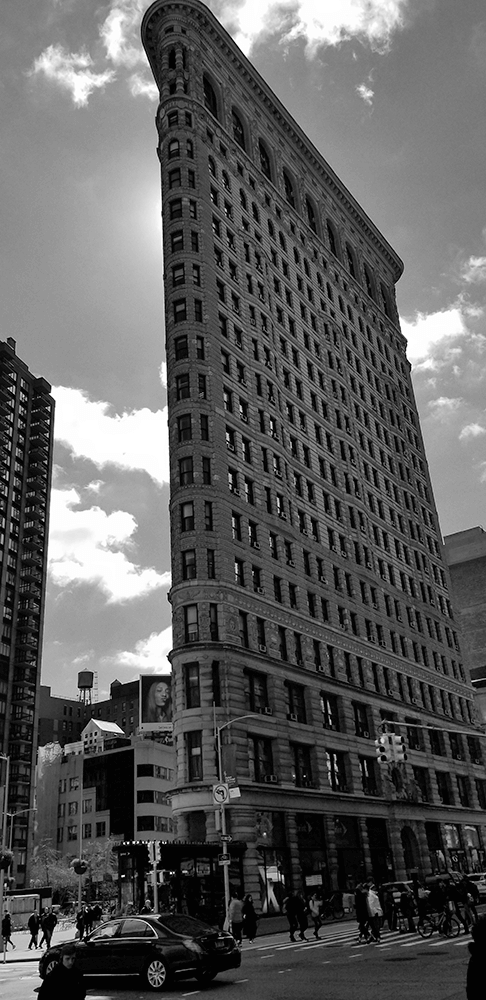Museum
Central Park
The Frick Collection
The Frick Collection – Ein Meisterwerk der Kunst und Architektur in New York City Die Frick Collection ist eines der bedeutendsten Kunstmuseen in New York City und bietet eine exquisite Sammlung europäischer Meisterwerke, die in einem historischen Stadthaus untergebracht sind. Gegründet von dem amerikanischen Industriellen und Kunstsammler Henry Clay Frick, ist die Sammlung ein faszinierendes Zeugnis für die Kunstgeschichte und die Entwicklung des Geschmacks im späten 19. und frühen 20. Jahrhundert. Historischer Hintergrund Henry Clay Frick, ein erfolgreicher Unternehmer in der Kohle- und Stahlindustrie, begann in den 1880er Jahren mit dem Sammeln von Kunstwerken. Seine Leidenschaft für die Kunst führte dazu, dass er eine beeindruckende Sammlung zusammenstellte, die Werke von berühmten Künstlern wie Vermeer, Rembrandt, Titian und Goya umfasst. Nach seinem Tod im Jahr 1919 wurde das Frick Collection Museum im ehemaligen Wohnhaus Fricks in der East 70th Street eröffnet. Das Gebäude, das ursprünglich 1914 erbaut wurde, wurde von dem Architekten Thomas Hastings im neoklassizistischen Stil entworfen und spiegelt die Eleganz und den Reichtum der damaligen Zeit wider. Architektur und Innenräume Die Architektur der Frick Collection ist ebenso beeindruckend wie die Kunstwerke, die sie beherbergt. Fassade: Die Fassade des Gebäudes ist mit klassizistischen Elementen verziert, darunter Säulen und aufwendige Ornamente, die dem Besucher sofort das Gefühl von historischem Reichtum vermitteln. Innenräume: Die Innenräume sind sorgfältig gestaltet und bieten eine intime Atmosphäre, die die Besucher in die Welt der Kunst und Kultur eintauchen lässt. Die Räume sind mit edlen Möbeln, antiken Teppichen und prächtigen Kronleuchtern ausgestattet, die den Charme der frühen 1900er Jahre bewahren. Die Kunstsammlung Die Frick Collection beherbergt eine der bedeutendsten Sammlungen europäischer Malerei und Kunstwerke in den Vereinigten Staaten. Gemälde: Zu den Höhepunkten der Sammlung gehören Meisterwerke von Künstlern wie Johannes Vermeer, dessen berühmtes Gemälde „Das Mädchen mit dem Perlenohrring“ zu den bekanntesten Werken zählt. Weitere bemerkenswerte Werke stammen von Rembrandt, Titian und van Dyck. Skulpturen und dekorative Kunst: Neben Gemälden umfasst die Sammlung auch Skulpturen, Möbel und dekorative Kunstwerke, die die Vielfalt und den Reichtum der europäischen Kunstgeschichte widerspiegeln. Besonders hervorzuheben sind die exquisite Porzellansammlung und die antiken Möbel, die den Stil und die Eleganz vergangener Epochen verkörpern. Besondere Ausstellungen und Programme Die Frick Collection bietet regelmäßig wechselnde Ausstellungen und Programme, die die Besucher ansprechen und die Sammlung ergänzen. Wechselnde Ausstellungen: Neben der ständigen Sammlung präsentiert das Museum auch temporäre Ausstellungen, die sich auf spezifische Themen, Künstler oder Epochen konzentrieren. Diese Ausstellungen bieten den Besuchern die Möglichkeit, neue Perspektiven auf bekannte Werke zu gewinnen. Bildungsprogramme: Die Frick Collection engagiert sich auch in der Bildung und bietet eine Vielzahl von Programmen, darunter Führungen, Vorträge und Workshops. Diese Programme richten sich an Schüler, Studenten und Kunstliebhaber und fördern das Verständnis für Kunst und Kultur. Die Frick Collection ist ein unverzichtbares Ziel für Kunstliebhaber und Besucher von New York City. Mit ihrer beeindruckenden Sammlung europäischer Meisterwerke, der eleganten Architektur und der intimen Atmosphäre bietet sie ein einzigartiges Erlebnis, das die Besucher in die Welt der Kunst und Geschichte eintauchen lässt. Die Frick Collection bleibt ein Symbol für die Leidenschaft und das Engagement von Henry Clay Frick für die Kunst und trägt zur kulturellen Vielfalt und zum Erbe von New York City bei. In einer Stadt, die für ihre dynamische Kunstszene bekannt ist, ist die Frick Collection ein Ort der Ruhe und Inspiration, der die Schönheit und den Reichtum der Kunst feiert.
1 2 NYCGO 3 4









































